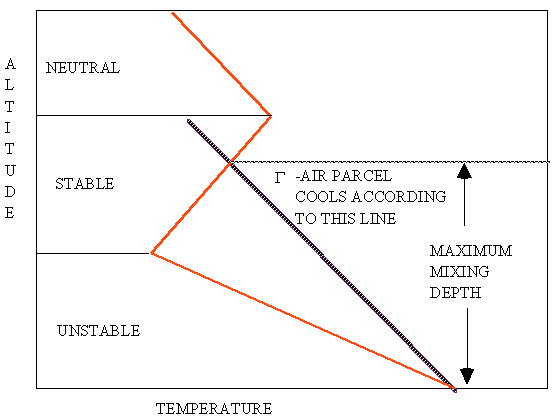| Maximum Mixing Depth | |
|
|
|
 |
Unit 4 discussed the origins of lapse rates and their most immediately visible effects. We now go on to consider how this can be applied in relatively simple situations. The amount of air available to dilute pollutants depends on both wind speed and the extent to which emissions can rise into atmosphere-the maximum mixing depth. Imagine a parcel of air at ground level being warmed (by convection). It will tend to rise but how high? Remember that as it moves up it will cool at about 1 degree per hundred metres. |
| Whenever its temperature is greater than surrounding air it will continue to rise. But if the temperature becomes less than ambient then the parcel of air will fall. A temperature profile of the atmosphere allows us to determine the maximum height of ascent. | |
 |
|
| And thus we can see that the maximum mixing depth can be obtained provided we have a temperature profile for the atmosphere. | |